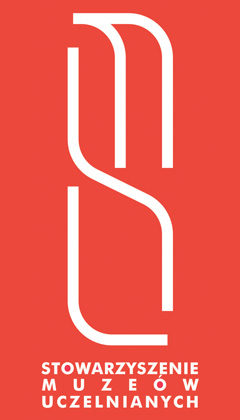Road to Freedom – General Władysław Anders Museum
ul. Kozienicka 24
30-397 Kraków
ul. Podchorążych 2
30-084 Kraków
Tel. 512 861 280 / 797 996 384
muzeumandersa@up.krakow.pl
muzeumandersa@gmail.com
Staff: Prof. Hubert Chudzio, Anna Hejczyk MA, Alicja Śmigielska MA, Mariusz Solarz MA, Monika Zemła MA
The Road to Freedom – General Władysław Anders Museum within the structure of the Pedagogical University of Kraków was established by a decision of the rector of the Pedagogical University, Prof. Kazimierz Karolczak, on 30 March 2020. A letter of intent regarding this matter had already been signed in 2017 by the Voivode of Małopolska and the rector of the Pedagogical University. The initiative was under the honorary patronage of the general’s daughter, Anna Maria Anders. The basis for establishing the museum was a collection which had been amassed by the Centre for Documentation of Deportations, Expulsions and Resettlements at the Pedagogical University of Kraków (CDDER). For
many years, this latter Institution has been documenting the forced migration of Poles, in particular the fate of Poles exiled to the Soviet Union. The Archives of CDDER contain more than 300 accounts by witnesses of the events (in audiovisual form) who together with General Władysław Anders left the USSR in 1942. These testimonies are by both
soldiers and civilians. Moreover the centre has more than a thousand documents and photographs related to the exodus and its consequences. The fate of Polish refugees in the Soviet Union varied greatly. In the Middle East there were Junak Schools (for members of the Young Men’s Labour Batallions) and for Young Female Volunteers, where soldiers went into service and were trained. Some of them – the ranks of the Second Polish Corps – headed by General Władysław Anders, set off for the Italian Front. They became famous for the Battles at Monte Cassino, Ancona and the liberation of Bologna. However, the civil population which originally found itself in Iran, then ended up in Polish refugee settlements in East and South Africa, India, Mexico, and also in New Zealand. A large number of the refugees also ended up in Palestine. The Poles left Africa and other refugee settlements at the turn of the 1940s/1950s; some left for Poland and others decided to live abroad as émigrés and went to the United Kingom, Australia, Canada, the USA and other countries. To this day there are still people living in these countries who passed through this difficult Road to Freedom. They all share a tragic past in Siberia. The museum documents the fate of approx. 120,000 Poles, who left the USSR in 1942 – from their life in the interwar period until today. There is still a Polish diaspora scattered around the world which functions as part of an extensive Association of Polish Refugees from Siberia. The museum will be supported by the staff of the CDDER, whose director, Prof. Hubert Chudzio, initiated the establishment of a new entity within the university structures. The museum’s activities are also supported by the Institutes within the Faculty of Humanities and the Faculty of Art. The first phase of the museum’s operations is to set up an Educational Park project – General Władysław Anders ‛Road to Freedom’ with multimedia installations and symbolic objects. The park is being built on more than three hectares of land, partially wooded, which adjoins Fort ‛Skotniki’ 52 ½ N, the seat of the Centre for Documentation of Deportations, Expulsions and Resettlements at the Pedagogical University of Kraków. The museum is also trying to acquire premises in Kraków suitable for holding permanent exhibitions. Currently it organizes temporary exhibitions.
Prof. Hubert Chudzio, Anna Hejczyk MA












